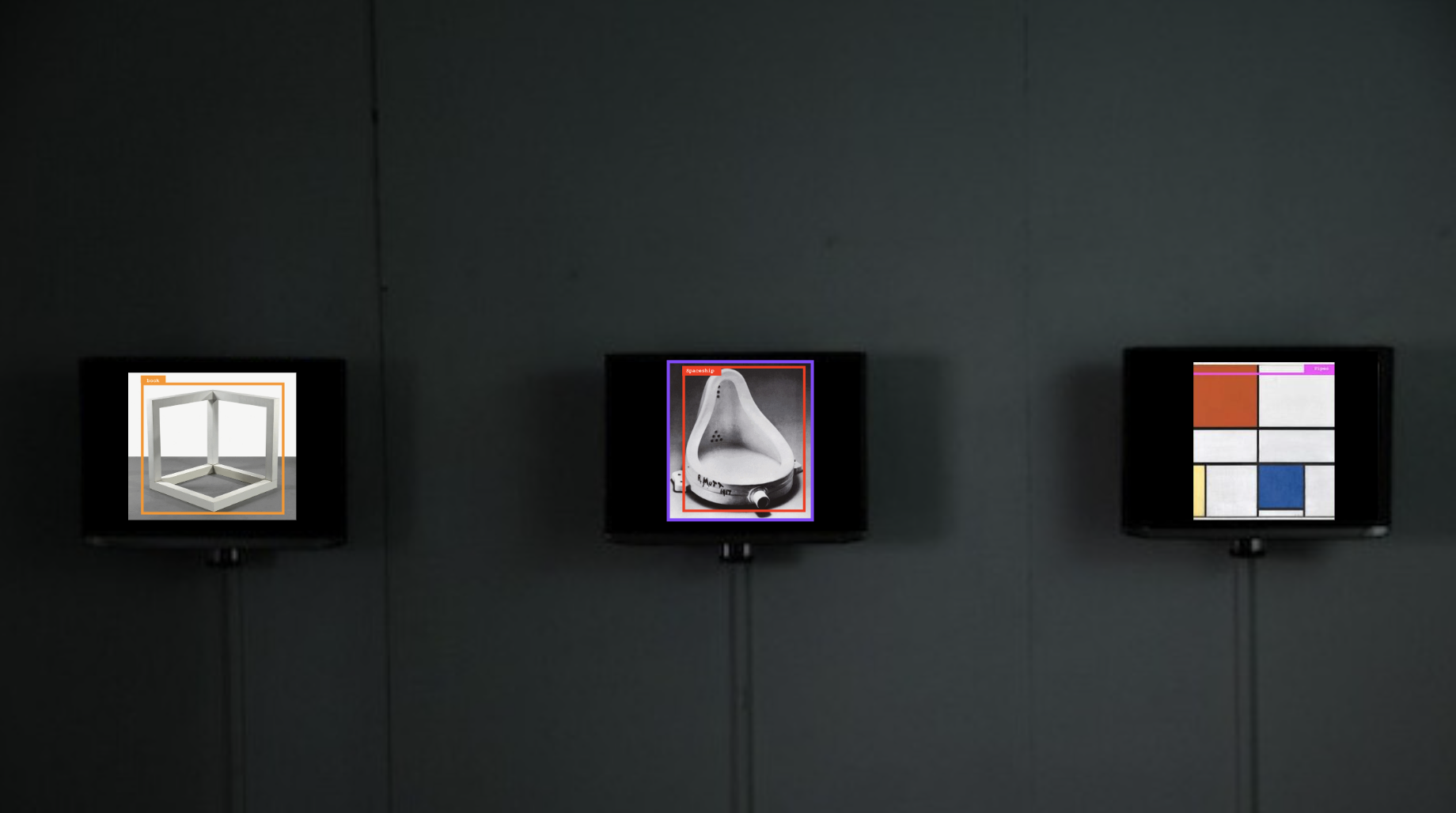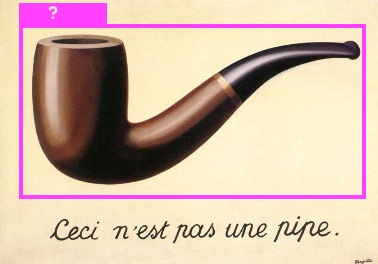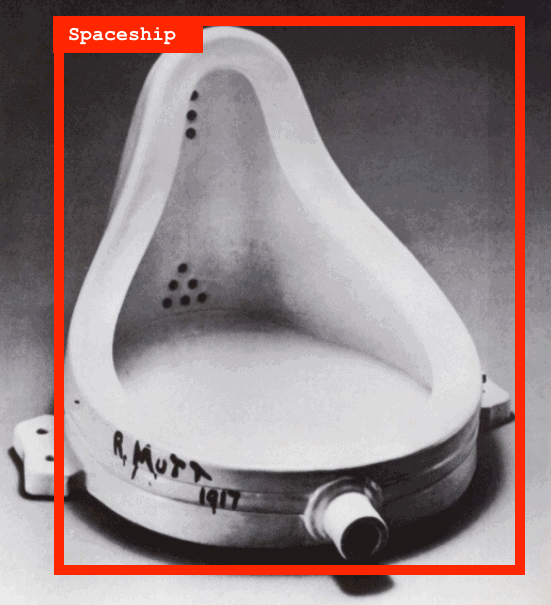Look and Read
Three-channel video Installation,
2022
Look and Read is a 3-channel video consisting of a series of image datasets selected from famous conceptual and abstract artworks from contemporary art history. Each artwork image has one or more colour-coded rectangular boxes on it. The rectangular box indicates that the machine learning algorithm identifies the artwork's image element, and the identified noun appears above the box.
These visual compositions of images with boxes and text look like the YOLO model, which is widely used for AI object recognition and object detection. The algorithm model is typically used for object detection in technologies such as autonomous driving. By learning, human labelling and classifying large batches of image information, the machine can recognize objects within the frame with the help of the YOLO algorithm as it learns to classify large batches of information.
However, a reversal of this artwork is that it is not the YOLO algorithm that presents the recognition results, but the words are named by three children aged 7-9. These words are their first response when they look at the artwork. I asked them to view works from contemporary art history, and they responded to the artworks after naming each one with only a noun. It is worth noting that these children had not seen these works.
Look and Read seeks to expose, in a counterfactual way, the possible human intervention in training today's artificial intelligence in datasets. In today's digital age, collecting data on a large scale requires a human being to classify the data. AI algorithms cannot understand datasets' potential complexity and subjectivity. Seemingly innocuous and anonymised data messages are often laced with highly personalised messages. These messages can lead to social issues of bias and subjectivity in implementing AI technologies, raising questions about AI data subjects.
The work also attempts to echo John Searle's The Chinese Room argument. This thought experiment is used to counter the idea that computers and other artificial intelligence can think. Unlike the Chinese Room scenario, the three children respond to the artwork from their imagination and subconscious. They may not understand the artwork's meaning, but their imagination and subconscious can give them a unique response to the artwork.
A headphone will be attached to the bottom of each of the video, and inside the headphone plays a recording of the children's words.
Three-channel video Installation,
with headphones
2022Look and Read is a 3-channel video consisting of a series of image datasets selected from famous conceptual and abstract artworks from contemporary art history. Each artwork image has one or more colour-coded rectangular boxes on it. The rectangular box indicates that the machine learning algorithm identifies the artwork's image element, and the identified noun appears above the box.
These visual compositions of images with boxes and text look like the YOLO model, which is widely used for AI object recognition and object detection. The algorithm model is typically used for object detection in technologies such as autonomous driving. By learning, human labelling and classifying large batches of image information, the machine can recognize objects within the frame with the help of the YOLO algorithm as it learns to classify large batches of information.
However, a reversal of this artwork is that it is not the YOLO algorithm that presents the recognition results, but the words are named by three children aged 7-9. These words are their first response when they look at the artwork. I asked them to view works from contemporary art history, and they responded to the artworks after naming each one with only a noun. It is worth noting that these children had not seen these works.
Look and Read seeks to expose, in a counterfactual way, the possible human intervention in training today's artificial intelligence in datasets. In today's digital age, collecting data on a large scale requires a human being to classify the data. AI algorithms cannot understand datasets' potential complexity and subjectivity. Seemingly innocuous and anonymised data messages are often laced with highly personalised messages. These messages can lead to social issues of bias and subjectivity in implementing AI technologies, raising questions about AI data subjects.
The work also attempts to echo John Searle's The Chinese Room argument. This thought experiment is used to counter the idea that computers and other artificial intelligence can think. Unlike the Chinese Room scenario, the three children respond to the artwork from their imagination and subconscious. They may not understand the artwork's meaning, but their imagination and subconscious can give them a unique response to the artwork.
A headphone will be attached to the bottom of each of the video, and inside the headphone plays a recording of the children's words.



